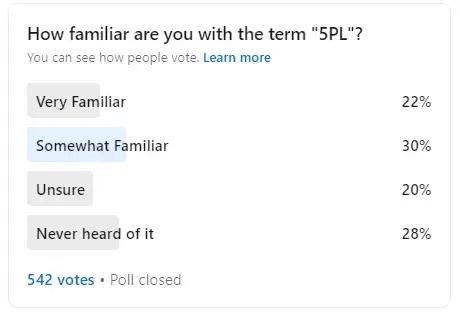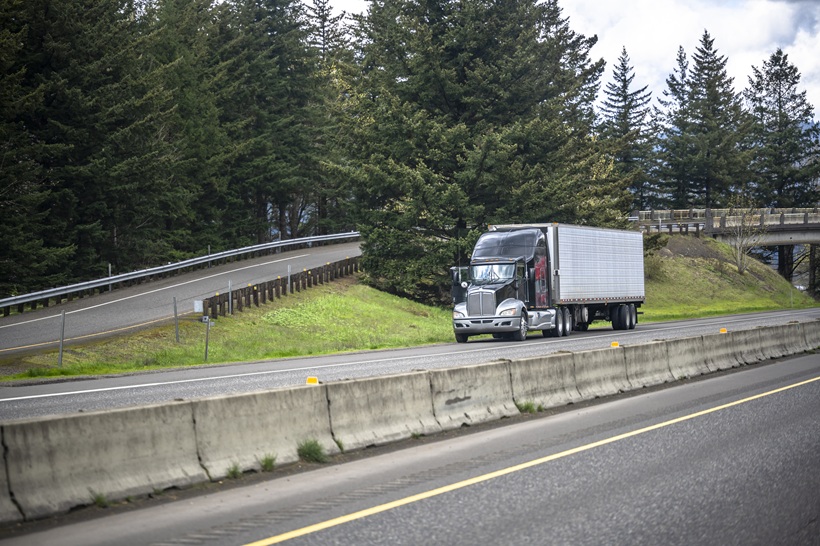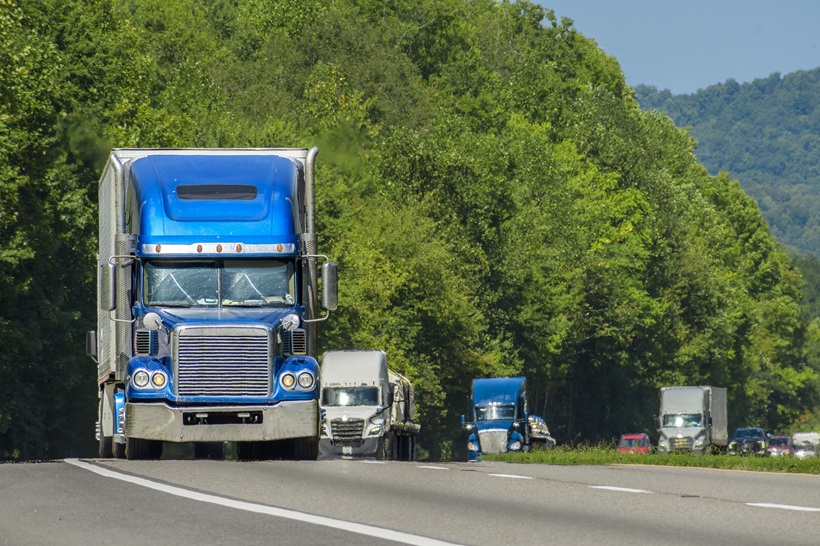
What is 5PL? And why professionals think it will solve the supply chain’s biggest pain points.
The supply chain has no shortage of acronyms; ELD, ACE, POD, 3PL, eBOL, ECCN, among others. And more recently a new term has joined the list, creating buzz and debate over something referred to as “5PL.”
If you haven’t heard of 5PL yet, you’re not alone. A recent LinkedIn poll surveyed over 500 industry professionals and 48 percent had either never heard of the term or were unsure.

Before dissecting the details of 5PL within the supply chain, let’s revisit the preceding four “PLs”.
1PL – manufacturers handling their own shipping in-house with no other parties involved
2PL – a contracted shipping company – often a carrier or owner-operator
3PL – a contracted broker who coordinates shipments between manufacturers and carriers
4PL – a term used to describe certain 3PLs offering additional services that expand beyond standard logistics processes – such as IT, Project Management, etc. (Deliverr).
Finally, 5PL – which broadly speaking is referred to as an optimizer or “e-solution” encompassing supply chain processes from beginning to end. Where a company ultimately lands within the logistics pyramid (1PL-5PL) revolves around how many parties fit within the supply chain process and what they can do.

Some ambiguity still exists around this new 5PL term. One type of definition focuses more on encompassing the entire supply chain into one digital ecosystem for the managing of shipments, loads, payments, etc. Another definition focuses more on describing 5PLs as solution providers offering load management software on behalf of multiple parties in the industry.
Ultimately, a fully functional 5PL company should encompass both – hosting a digital network environment of software solutions – all within an immersive ecosystem that joins all parties together on one intelligent platform. The goal being to create a fully connected supply chain.
Note: 5PLs are not competitors of 3PLs. Instead, 3PLs become part of a connected ecosystem and benefit from digital solutions, partnerships, and intelligent automation software – the same goes for carriers, shippers, and factors.
While the “5PL” terminology is relatively new, the practice of optimizing the supply chain has been a cornerstone for many years. Transflo is a great example of a fully functioning 5PL today. The company’s creation of its uniquely connected digital ecosystem allows all parties within the supply chain to utilize communications, digital document capture, hyper-automation, digitized paperwork, data mining, and more.
Whether or not the 5PL terminology sticks, the impact this concept has on the supply chain is substantial, with many professionals even referring to it as essential to the growth of the transportation industry as a whole.
For more information on how your freight business can join the industry’s leading digital ecosystem and benefit from its solutions, please click on your business type below.



